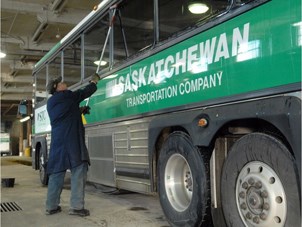In a province where a relatively small population is scattered across a rather massive area, how to stay connected with one another is an important issue.
Certainly how we maintain our connections has changed dramatically over the last few decades.
We first saw branchline rail service abandoned across vast areas of the province. With the rail pulled up, many communities found themselves with a bleak future.
The grain elevator which brought farmers to the community to market grain was likewise lost with no rail service, and a trend of rural population decline was hastened in many places across our province.
With grain elevators and rail service spread farther apart farmers moved to larger grain trucks and hit the highways to deliver grain.
And while those grain trucks are not the only reason for the decline in highway conditions they have been part of the higher traffic loads as we were forced to be more reliant on trucks to move goods around the province.
When it came to moving people, Saskatchewan had a bus service which ensured people in almost every community even of moderate size could connect with anywhere else in the province, and beyond.
It was a service ideal for students wanting to get home for weekends from university without driving, for seniors wanting to visit families, and for anyone needing to travel to the big city for health services.
But the Saskatchewan Transportation Corporation existed at a cost. It was a valued service by many, but not by enough that it operated at a profit. So the government through the years covered shortfalls, a subsidy seen as reasonable at the time as a means of keeping us connected.
That is until the current Saskatchewan Party government came out of the best economic times in our history into a bath of red ink. Then suddenly STC, which had for decades been seen as an essential service by so many, was chopped to save money.
That decision has now proven to be the push on the first domino, which has now seen the second domino topple.
Without the feeder system that was STC, people from across the province aren’t getting to locales along Highway #1 and the Yellowhead to transfer to Greyhound to connect with the rest of Canada.
The lack of a feeder service is no doubt part of the evaluation which has led to Greyhound shutting down its service in Saskatchewan, and across the Canadian west.
So what happens now for those without vehicles to connect provincially, or the funds to fly across the west?
That is a question without a clear answer.
We may be able to connect with someone anywhere in the world to talk by pushing a few buttons on a tiny device in our pocket, but how to get to a community on the other side of our province will not be so easy.
And that is not a good thing.
We need the ability for people to get where they need to be in a reasonable timeframe and at an affordable cost.
With the buses gone that is no longer the case for many, and it becomes an issue in need of a solution.



